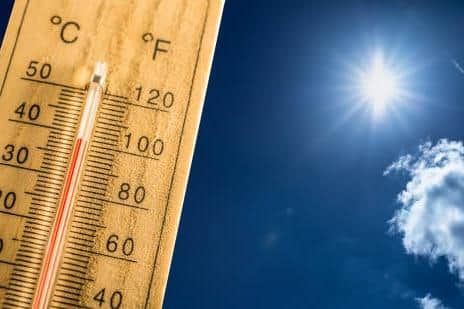West Yorkshire to face scorching 'heat dome' with the chance of 32 degree weather in weeks
and live on Freeview channel 276
A number of heatwaves are expected in late July and August across West Yorkshire, with reports of a potential ‘heat dome’ also hitting the country.
A heat dome is caused when the atmosphere traps hot air from the ocean, causing a spike in temperatures.
Advertisement
Hide AdAdvertisement
Hide AdWhile the forecast for the next few days shows an unsettled picture with temperatures closer to average, this won’t be enough to prevent June 2023 being provisionally the UK’s hottest June on record, beating the previous record set in 1940, as well as June 1976 (part of the well-known summer of 1976), which is currently the second warmest June on record.


Meteorological consultant Jim Dale said: "The heat is not all over yet.
“We've got two weeks of general temperate weather coming but we've still got the rest of July, and then we go into the traditional hottest spell of the year - the first two weeks of August.
“The second half of July is likely to see lots of warm weather due to these very record breaking sea temperatures, and because we're in a climate change scenario, all we have to wait for is the right synoptic situation – synoptic meaning the highs and the lows in the right place.
Advertisement
Hide AdAdvertisement
Hide Ad“The expectation of that heat wave weather, or ‘heat dome’, is probably around about a 50% to 60% chance as we go through the second part of July into August because of this.” Jim continued.
"If the heat dome does hit, then West Yorkshire can definetely expect temperatures up to 32 degrees.”
Within West Yorkshire, the Met Office has predicted that temperatures are expected to be “around average for early July, potentially slightly lower in wetter areas, and a little warmer in the south, particularly in any brighter spells and later in the period.”
However, later into the month, the Met Office predicts that the chances of “above-average temperatures” redeveloping are slightly higher than normal.
Therefore, the “chance of heatwave conditions developing is thus also slightly higher than normal, although the occurrence of heatwaves is ‘not unusual for July.’”